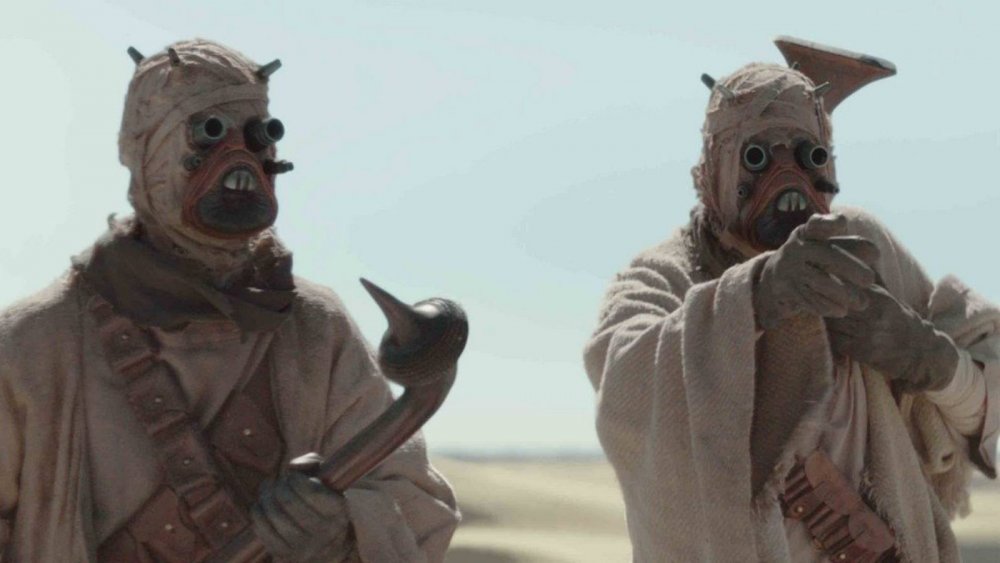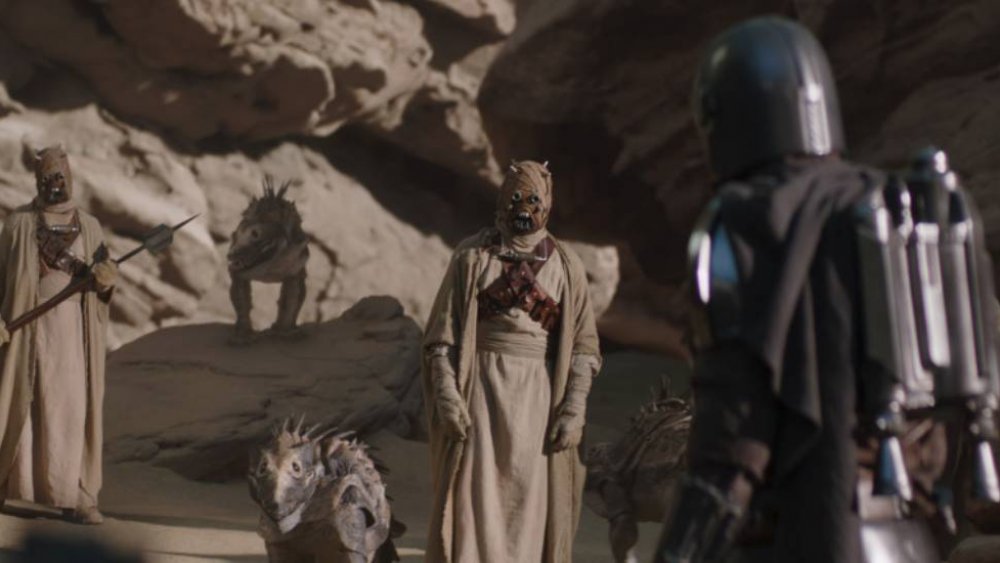The Truth Behind The Mandalorian's Tusken Raider Sign Language
Contains spoilers for The Mandalorian season 2
The Mandalorian is back in a big way, with the first episode of season 2 leading the way for a very exciting series arc. There was a lot for Star Wars fans to sink their teeth into — from mythical monsters who have rarely been seen throughout the franchise to a fan-favorite character returning at the very end of the episode. It's clear the creators behind the scenes have a great deal of respect for this universe, and that includes striving for greater representation for the Deaf community.
Seeing as how Mando (Pedro Pascal) and the Child (aka Baby Yoda) return to Tatooine on Chapter 9, the premiere episode of The Mandalorian season 2, it makes sense that Tusken Raiders would come back to lend a hand during the final battle. While these characters tend to communicate via a series of grunts, fans may have picked up on how it also looked as though they spoke with each other through sign language. It turns out that Troy Kotsur, one of the actors playing a Tusken Raider, is Deaf and helped design Tusken Sign Language (TSL) for the series.
Troy Kotsur built TSL around the culture of Tusken Raiders
Kotsur sat down with an interview for The Daily Moth, during which he spoke at length about his passion for Star Wars, being a fan since he was eight years old. It was a dream come true for him to be cast on The Mandalorian, and he said that it even said in the script that the Tusken Raiders were to use sign language. Kotsur was brought on not just to play one of the aliens, but also to develop a language for the Raiders to use. According to the actor, he wanted to make a form of communication that was entirely its own.
"I did research on the culture and environment of Tusken Raiders. I researched on the desert called 'sand people.' That is what Luke Skywalker calls them — 'sand people.' Anyway, my goal was to avoid ASL. I made sure it became Tusken Sign Language based on their culture and environment," Kotsur explained.
It's great to hear the commitment to building out this universe even more while simultaneously adding representation for underrepresented groups. Kotsur even shared how to say "Mandalorian" in TSL, which is based on the sign for "Helmet" and then the hand shape for the letter "M."
Finally, Kotsur shared what he wanted to tell the Deaf community: "I hope that you keep telling Disney+ that you want to see more sign language. I hope that the producers keep an open mind because this is just the beginning."
Star Wars opens up a world where anything can happen and where everyone should feel like they belong. Hopefully, this inclusion encourages those behind the scenes to keep adding actors and characters with disabilities so that more communities can be represented.

